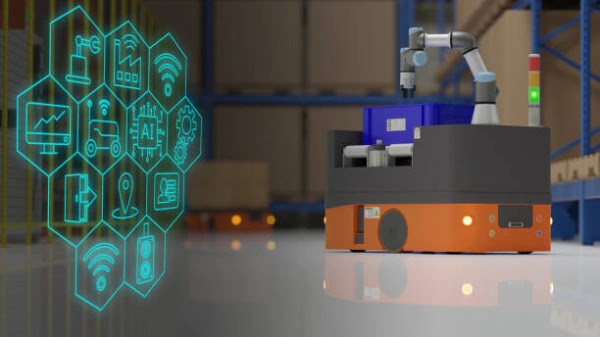Featured
- Get link
- X
- Other Apps
The Benefits of Charging Infrastructure

Charging Infrastructure
Charging infrastructure is a fundamental component of the
evolving landscape of electric mobility. As electric vehicles (EVs) gain
traction around the world, the availability of convenient and efficient
charging options becomes increasingly crucial. This essay explores the multifaceted
benefits of charging infrastructure, highlighting its role in accelerating the
adoption of EVs, enhancing energy security, reducing environmental impact, and
shaping a more sustainable transportation ecosystem.
1. Accelerating Electric Vehicle Adoption
Charging infrastructure plays a pivotal role in driving the
widespread adoption of electric vehicles. One of the primary concerns for
potential EV buyers is "range anxiety," the fear of running out of
battery charge during a journey. An extensive and easily accessible charging
network alleviates this concern, instilling confidence in drivers that they can
conveniently recharge their vehicles when needed.
The expansion of charging infrastructure also encourages fleet operators, businesses, and government agencies to incorporate EVs into their operations. As the availability of charging stations increases, the barrier to entry for adopting electric vehicles decreases, leading to a more rapid transition to cleaner transportation options.
2. Range Confidence and Mobility
The availability of a well-distributed charging network
enhances range confidence among EV owners. Drivers can plan longer journeys
with the assurance that charging stations are strategically located along their
routes. This increased mobility opens up possibilities for electric vehicles to
replace traditional gasoline-powered cars for both daily commuting and
long-distance travel.
Additionally, charging infrastructure enables the use of
electric vehicles in regions where charging at home might not be feasible due
to parking constraints or lack of charging facilities. This inclusivity
promotes equitable access to clean transportation solutions.
3. Energy Security and Decentralization
Charging infrastructure contributes to energy security by
diversifying energy sources for transportation. As more EVs are charged with
electricity from renewable sources, such as solar and wind, the transportation
sector becomes less reliant on imported oil and fossil fuels. This transition
aligns with broader energy security goals and reduces vulnerability to
fluctuations in global energy markets.
Furthermore, decentralized charging infrastructure promotes
localized energy production and consumption. By leveraging local renewable
resources, communities can establish microgrids and charging stations that
enhance energy resilience and reduce the strain on central power grids during
peak demand.
4. Environmental Benefits
Charging infrastructure is a critical enabler of cleaner transportation options, leading to reduced greenhouse gas emissions and improved air quality. When EVs are charged with electricity from renewable sources, their overall carbon footprint is significantly lower compared to vehicles powered by internal combustion engines.
Charging infrastructure also supports the integration of renewable energy into the grid. Excess electricity generated by solar and wind farms during off-peak hours can be stored in EV batteries and released back to the grid during high-demand periods. This energy storage capability contributes to a more stable and reliable energy system, enhancing the environmental benefits of both EVs and renewable energy sources.
5. Economic Growth and Job Creation
The deployment of charging infrastructure stimulates
economic growth and job creation. The installation, operation, and maintenance
of charging stations create employment opportunities in various sectors,
including construction, engineering, technology, and customer service.
Additionally, as the electric vehicle market expands, businesses that provide
charging services, equipment, and associated technologies experience growth and
innovation.
Furthermore, the tourism industry can benefit from charging
infrastructure. Tourist destinations equipped with EV charging stations can
attract EV drivers and contribute to local economies by encouraging sustainable
travel.
6. Technological Innovation
Charging infrastructure fosters technological innovation
across multiple domains. The development of faster charging technologies,
wireless charging solutions, and smart grid integration is driven by the need
to optimize the charging experience for EV users. As technology evolves,
charging stations are becoming more efficient, user-friendly, and integrated
into smart city infrastructure.
Innovations in energy storage and grid management, necessary for accommodating the increased demand from EVs, have broader implications for energy systems as a whole. This spillover effect drives advancements in energy storage, grid optimization, and sustainable energy management.
7. Public Health Benefits
Charging infrastructure contributes to public health by
reducing air pollution and improving urban air quality. The adoption of
electric vehicles powered by clean electricity results in fewer tailpipe emissions,
such as nitrogen oxides and particulate matter, which are known to have adverse
health effects. As EVs replace conventional vehicles, the reduction in air
pollution contributes to lower rates of respiratory diseases and improved
overall public health.
8. Investment in Sustainable Transportation
Charging infrastructure is an investment in a more
sustainable and resilient transportation ecosystem. Governments, private
companies, and communities that prioritize charging network expansion
contribute to a cleaner and greener future. The investment in charging
infrastructure also sends a strong signal of commitment to sustainability and
encourages other stakeholders to follow suit.
Conclusion
Charging infrastructure serves as the backbone of the electric mobility revolution, shaping the transition to cleaner, more sustainable transportation. By accelerating EV adoption, enhancing energy security, promoting environmental conservation, fostering economic growth, driving technological innovation, and improving public health, charging infrastructure addresses multiple societal challenges simultaneously. As the world moves towards a more sustainable future, the continued development and expansion of charging infrastructure remain critical for realizing the full potential of electric vehicles and creating a transportation ecosystem that benefits both individuals and the planet.
- Get link
- X
- Other Apps

